A digital twin is an identical virtual representation of a real-world physical object, such as a piece of machinery. It’s used to catalog the object’s properties, dimensions, and components; to predict its behavior under a variety of conditions; and aid with the manufacture, repair, or replacement of that object.
The term digital twin also can be applied to people, organizations, buildings, or even processes. Your digital twin online, for example, is made up of all of the available data about you, and many marketers use it to predict your buying behavior. But for this article, we’ll focus on digital twins of physical, manufacturable things.
Why Use a Digital Twin?
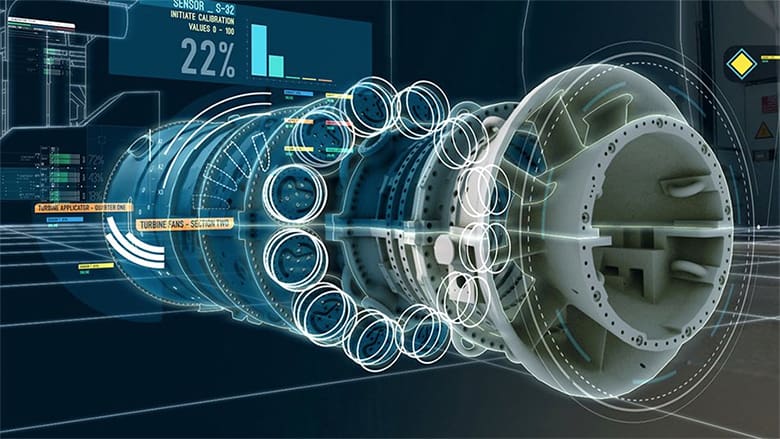
A digital twin of an object is far more than a computer-aided design (CAD) model. A digital twin is the CAD model plus lots of data, including simulation data, manufacturing data, and often feedback on the product’s performance over time. Any data relating to a product or a part can be folded into its digital twin.
Using software, such as Netfabb and Siemens NX, manufacturers can carry out simulations and tests on the digital twin and eliminate the need for multiple physical prototypes. Using sensor data, manufacturers can track and trace the conditions inside the 3D printer making a part. With every new layer and source of data, the digital twin becomes more complete.
Specifically for 3D printing, simulation data can help solve problems in additive manufacturing with consistency and anticipate problems that could appear from anomalies, such as focal melting of individually printed layers. Simulations can help predict issues with deformation, temperature distribution, recoater interference, and other thermo-mechanical phenomena. Having detailed data on print failures can aid in ensuring manufacturing consistency part after part, while being able to observe the fabrication process digitally first helps reduce the number of print failures and defects due to geometric issues.
Virtual twins also can boost design efficiency because they enable developers to try out and compare more configurations than would be possible with physical models. This enables designers and engineers to validate and optimize an object’s design before investing in the materials required to produce a physical prototype.
Although this sounds like ideal for rocket engine parts and automobiles – which it’s commonly applied to – the use of digital twins is also gaining ground (albeit slowly) in all types of manufacturing. Let’s take a look at how a digital twin coupled with additive manufacturing can give your company an edge.
How to Make a Digital Twin
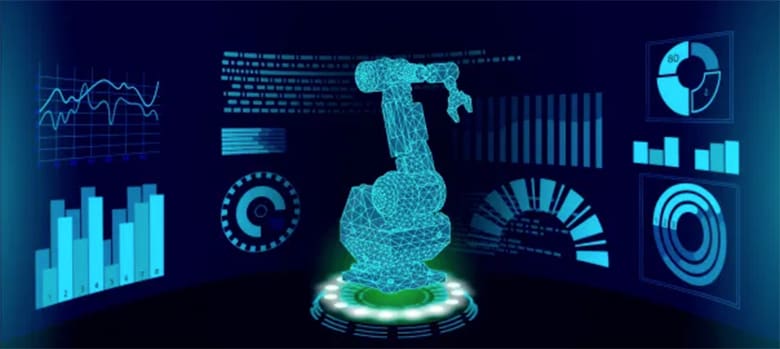
A digital twin starts as a 3D digital model developed through CAD, CAE, or generative design. Additional layers of data are applied to the CAD model through any of the software solutions and platforms mentioned below in the software section. Data from simulation and real world testing coupled from manufacturing data from your 3D printer and data from parts already in the field, flesh out your digital twin.
If the object already exists, but has no digital version, you can make a 3D scan of it using one of four technologies: a 3D laser scanner, structured light scanning, time-of-flight technology, which uses laser pulse scanning, or photogrammetry (a more sophisticated version of stereo vision involving more camera angles). Once you have your digital design version, it’s time to add on any other type of data you have like in the first example.
Although this may seem straightforward, in reality, for most companies, the technology is still out of reach.
Who is Using Digital Twin Technology?
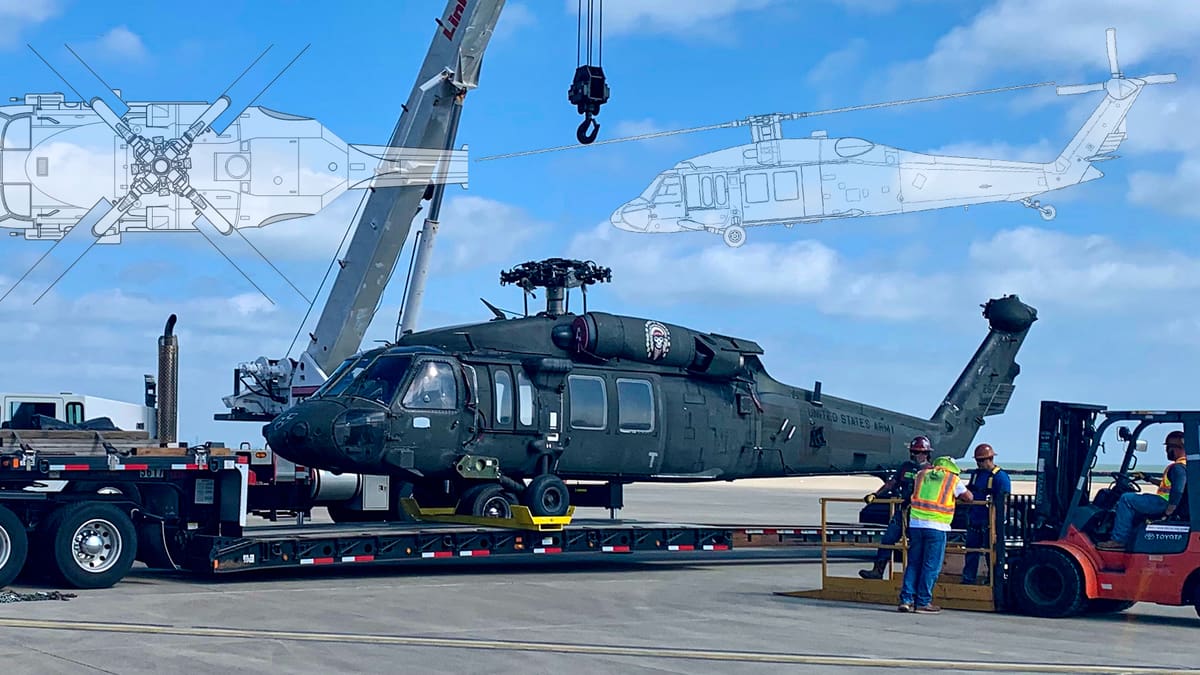
One example of digital twinning and additive manufacturing is the U.S. Army’s project to sustain their Blackhawk helicopter fleet. These vehicles were first introduced in 1979 and it has been decades since replacement parts were manufactured. Now, the Army is working with Wichita State University to disassemble a Blackhawk piece by piece and 3D scan each individual part in order to capture and store them as digital twins. The goal is to create a virtual database of the parts so that replacements can be made on-demand, some of which will be 3D printed. The digital twin will also aid mechanics in repair.
This example illustrates how digital twins and additive manufacture in combination can extend the life a wide range of equipment and machines for which it’s no longer feasible to manufacture and warehouse replacement parts.
More commonly today, digital twinning is used to predict when a machine will need maintenance. General Electric was an early adopter of digital twin software for physical assets. Their aviation division has been using the technology to predict engine degradation on their GE90 engine for the Boeing 777 aircraft fleet, enabling the company to alert customers when it’s time for maintenance. The same technology is applied to the parts they build for locomotives and wind turbines.
If you can predict which parts may need maintenance, you can preemptively design those parts differently. Another aircraft manufacturer, Boeing has been able to achieve up to a 40% improvement in first-time quality of the parts and systems it uses to manufacture commercial and military airplanes by using the digital twins and simulation, Boeing CEO Dennis Muilenburg told Aviation Today magazine.
Automobile manufacturers have been using digital twins for years. In one of the more advanced examples, Tesla creates a digital twin for every car it manufactures. Sensors from thousands of cars continuously stream performance data back to Tesla where artificial intelligence interprets the data and determines whether a car is working as intended or if it needs maintenance. By merging AI and IoT, Tesla is able to constantly learn from the real world and optimize each of its cars individually, in real-time.
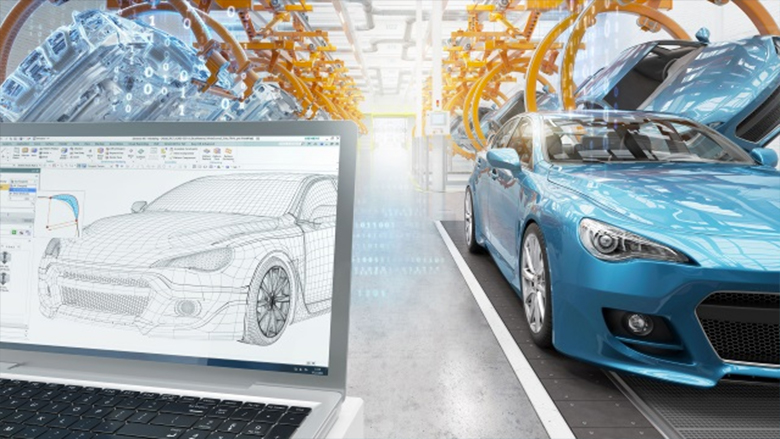
Maserati used Siemens’ CAD program NX not only to develop and shape its cars but also to simulate tests. With the digital copy, the company was able to generate a virtual copy in parallel to the physical development of the car – 100% true to the original, down to the last screw. In the development process, the Maserati developers used data from the real and the virtual models simultaneously, using that information in parallel for continuous optimization, and were able to reduce both the costs and the time required for development by 30%, according to Siemens.
Digital twins are also used for the creation of 3D printers themselves. Siemens helped HP create a digital twin of its Jet Fusion 5200 3D printer to help simulate airflow patterns through the machine. The data generated allowed HP to optimize its cooling channel topology for ideal ventilation and provided simulations of airflow patterns. The resulting new design enabled a 22% increase in airflow efficiency, allowing HP’s printing speed to increase by 15% without the risk of overheating.
Software for Digital Twins
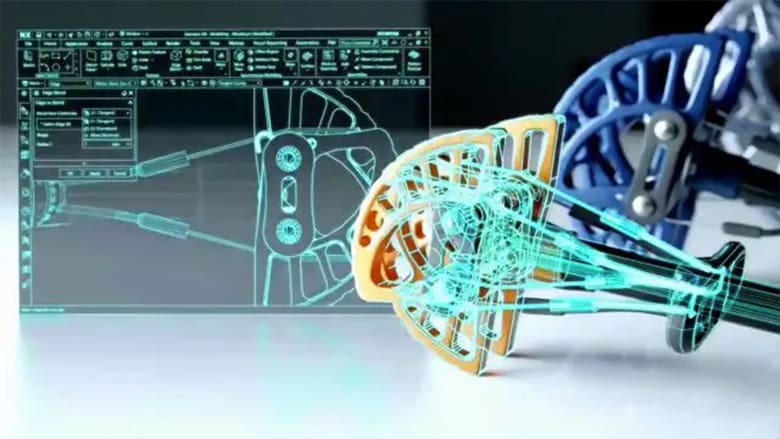
Digital twins require a lot of data and computational power, so they rely on many of the technologies associated with Industry 4.0 stack, such as cloud computing, simulations, IoT, smart sensors, big data, and analytics. It also takes flexible interoperability between your various pieces of software and platforms to integrate all of the data you may have on about a part. We’re beginning to see important partnerships among technology makers aimed at enabling this data exchange, but additive manufacturing is still at the beginning of this journey.
Like other cyber-physical systems, digital twining has been slow to develop to its full potential in companies that lag behind in onboarding new technologies. Several digital twin software solutions have come and gone because of challenges in integrating all of the necessary data from a range of sources, along with the manufacturing industry’s slow pace of technology adoption.
However, digital twining technology is being integrated into several software tools already used for additive manufacturing, enabling manufacturers to adopt both AM and digital twining at the same time.
Autodesk Netfabb & Fusion 360
The Additive Simulation Extension available in Autodesk’s Netfabb and Fusion 360 focuses on metal additive manufacturing with simulation technology that enables you to evaluate your designs and the numerous variables involved in metal additive manufacturing before sending a job to the printer.
Autodesk’s strongest move yet into digital twins is with its new Tandem program that brings digital twining to building information modeling, and, hopefully to manufacturing in the future.
“The value of a digital twin cannot be overstated because of its ability to connect the physical and digital worlds providing real-time operational awareness of structures, machines, or products,” says Nicolas Mangon, a vice president at Autodesk.
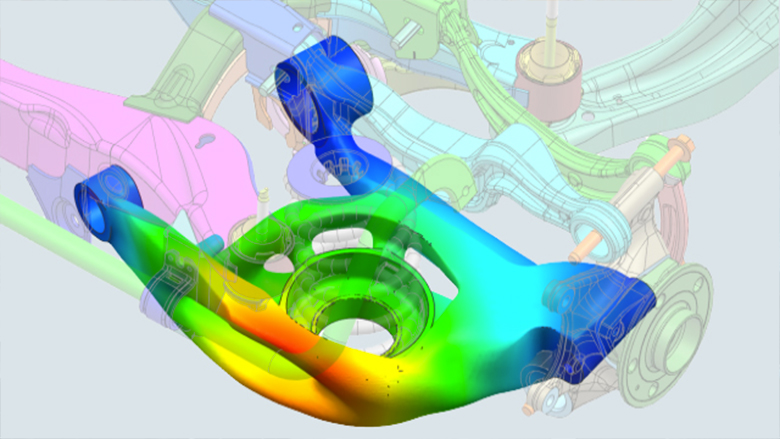
Siemens NX & Xcelerator
Used by engineers for design, simulation, and manufacturing, Siemens NX covers a product’s design, engineering analysis, and manufacturing. A combination of solutions that enable companies to “realize the value of the digital twin,” Siemens says.
Siemens NX removes the wall that has traditionally separated design and simulation teams by integrating Simcenter simulation technology into the NX platform.
Siemens’ recently announced new partnerships with three leaders in industrial additive manufacturing; Morf3D, Sintavia, and Evolve Additive Solutions. These partnerships’ overarching goal is to expand Siemens’ existing software ecosystem, the Xcelerator platform, to support the latest advancements and technologies in 3D printing.
Creo
In 2020, the makers of the popular 3D CAD software Creo, announced new enhancements to boast functionality powered by artificial intelligence technology. In addition to core product enhancements Creo 7.0 introduced new capabilities in four key areas: generative design, simulation-driven design, multibody design, and additive manufacturing.
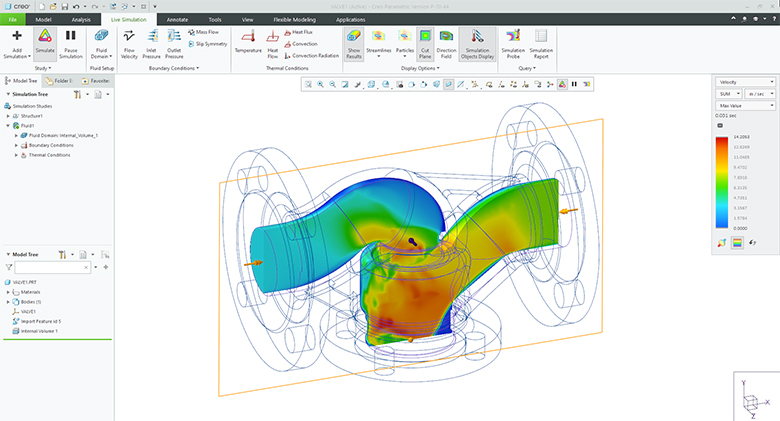
Authentise & Nebumind
Twinning software for additive manufacturing is more specialized and often requires collaboration. For example, software publisher Authentise has partnered with German software startup Nebumind to integrate digital twin visualizations into its software. Nebumind produces digital twin visualizations that fuse machine parameters and sensor data with the original part geometry. The integration of these visualizations with Authentise’s workflow tools for additive manufacturing can help users identify problem zones of each 3D printed part. Since the Authentise software already captures data from 3D printers and manages the printable geometry, the system passes this information on to nebumind automatically to ensure end-to-end traceability. Although this software isn’t used to test 3D printed parts, it compares the ideal virtual twin to a wide range of information gathered about the actual 3D printed object to reduce production rejects by up to 90%, Nebumind says.
Intellegens & Ansys
Early in 2021, machine learning solutions company Intellegens announced a collaboration with engineering simulation provider Ansys to accelerate the development of reliable and repeatable additive manufacturing processes. Combining the two companies’ technologies could accelerate AM project teams’ ability to analyze data from experiments, simulations, or production generating models and digital twins that capture vital insights. These models optimize process parameters and powders, improving AM parts’ quality while cutting time to market.
Vertex
This software can help you create rich, interactive 3D experience of your products from your CAD data. US-based Vertex’s cloud-based, digital twin platform enables team collaboration by unlocking 3D data and providing aligned visuals across engineering, procurement, manufacturing, sales, marketing, service, and the supply chain, the company says.
The ability of digital twins to save time and money has created a large market for digital twinning software from names such as aPriori and Akselos.
Current Limitations of Digital Twins

Although there are myriad benefits to creating a digital twin in additive manufacturing, there are also significant challenges to implementing it and it may not be right for every company, yet.
Connectivity
The need for connectivity and to produce real-time data is what make a digital twin different from mathematical and 3D models, and they are difficult to create. The computation power required to achieve this connection for is not always practical and the infrastructure is not universally available.
Data collection
A twin requires near-perfect data in order to make it work, including historical data that may not always be digitized. A company must first have a reliable process for collecting and storing data before creating a twin, meaning that they may also require new data management practices and pipelines between previously siloed team members.
Since digital twins need to represent every aspect of an object or system, a number of engineering disciplines come into play. As a result, the creation of a new workflow may be necessary to create the new pipelines needed to harness current data and share the results of testing.
The IT/OT divide can be difficult to overcome since operations technologists have mechanical and automation expertise while 3D modeling and simulation knowledge is the purview of information technologists.
Security
Remote sharing always carries with it the risk of interception by bad actors. The amount of data that needs to be transmitted for accurate models to be created and maintained is enormous and not all companies have the cybersecurity infrastructure to protect their intellectual property.
These challenges crop up again when the data is centrally stored. Any digital twin platform will need to reassure customers about the privacy of their data, though there are no assurances that a system will be unhackable.
Digital Twins are the Future of Manufacturing
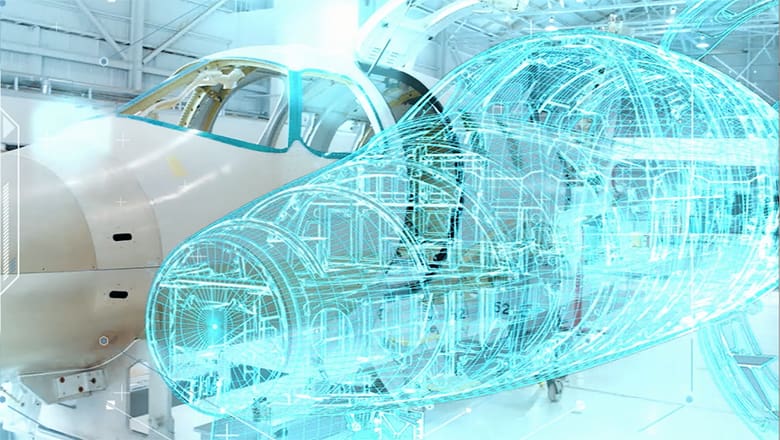
Although industry is gearing up for big moves with digital twin technology, it’s clear that not all customers will be ready to implement it right away. Larger manufacturing, automotive, and aerospace companies will reap the benefits of digital twin technology in additive manufacturing sooner rather than later.
To propel the innovation of digital twin technology, capture best practices, and harmonize the understanding of a digital twins across industry, Digital Twin Consortium was founded in December 2020. Signing on as consortium founding partners were Autodesk, Bentley Systems, and Microsoft among others.
It’s expected that, by 2025, nearly 89% of all IoT platforms will use some form of digital twin technology. With regard to additive manufacturing more specifically, while the above challenges apply, the industry stands to gain a lot in terms of saving time and costs and improving the printability of everything from on-demand parts to entire structures.
License: The text of "How Digital Twins Will Revolutionize 3D Manufacturing" by All3DP Pro is licensed under a Creative Commons Attribution 4.0 International License.
CERTAIN CONTENT THAT APPEARS ON THIS SITE COMES FROM AMAZON. THIS CONTENT IS PROVIDED ‘AS IS’ AND IS SUBJECT TO CHANGE OR REMOVAL AT ANY TIME.

